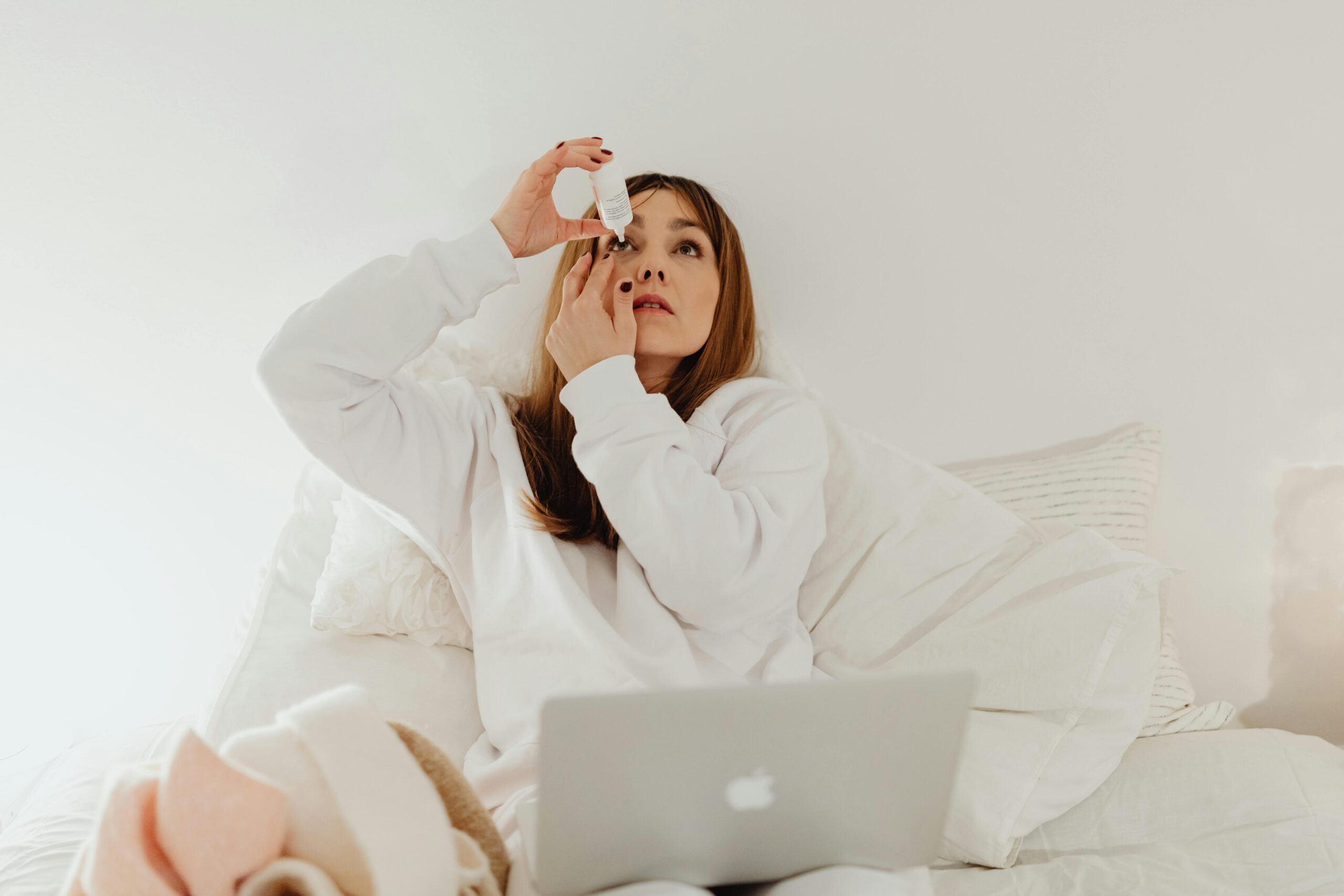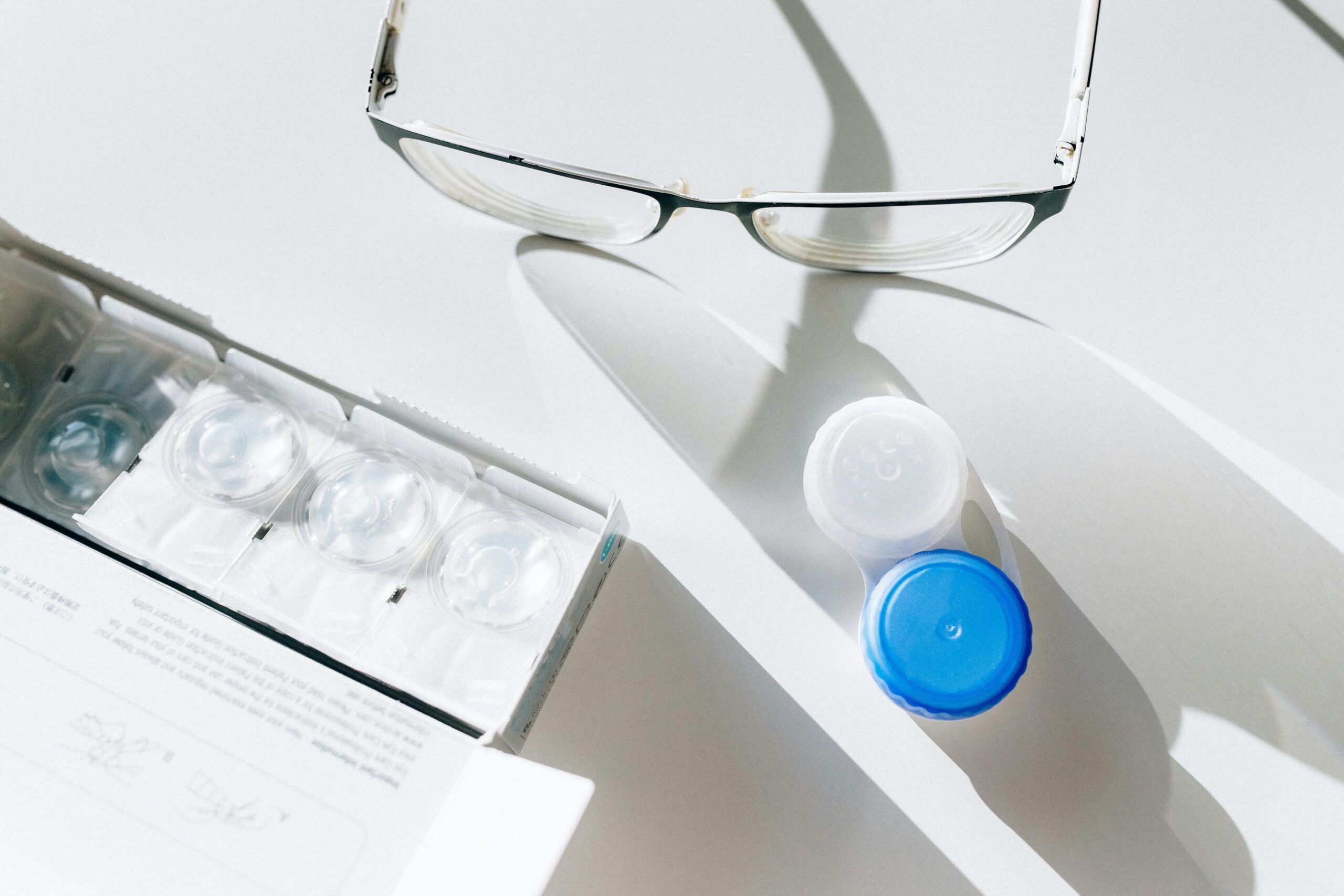Dry eyes are a common condition that occurs when your tears aren’t able to provide adequate lubrication for your eyes. This can happen if you don’t produce enough tears or if the tears you produce are of poor quality. Dry eyes can be uncomfortable and, if left untreated, can lead to inflammation and damage to the surface of your eyes.
While dry eyes are more common as we age, they can affect anyone, and understanding the causes, symptoms, and treatment options is essential for managing this condition effectively.
What Are Dry Eyes?
Tears are essential for maintaining the health of the front surface of the eye and for providing clear vision. They consist of three layers: a fatty (lipid) layer, a watery (aqueous) layer, and a mucus (mucin) layer. These layers work together to keep the surface of your eyes lubricated, smooth, and clear. When this balance is disrupted, you may experience dry eyes.
Causes of Dry Eyes
Dry eyes can result from a variety of factors, including:
- Age: Tear production tends to diminish with age, making dry eyes more common in older adults, particularly those over 50.
- Hormonal Changes: Changes in hormone levels, such as during pregnancy, menopause, or while using birth control pills, can affect tear production.
- Medical Conditions: Certain medical conditions, including diabetes, rheumatoid arthritis, thyroid disorders, and Sjögren’s syndrome (an autoimmune disease), can cause dry eyes.
- Medications: Some medications, including antihistamines, decongestants, blood pressure medications, and antidepressants, can reduce tear production.
- Environmental Factors: Exposure to wind, smoke, dry air, or prolonged use of digital screens can contribute to tear evaporation and dry eyes.
- Contact Lens Wear: Wearing contact lenses for extended periods can lead to dry eyes due to reduced oxygen supply to the cornea.
- Eye Surgery: Procedures like LASIK can temporarily reduce tear production, leading to dry eyes.
- Tear Gland Dysfunction: Issues with the glands responsible for producing tears can result in inadequate tear production or poor-quality tears.
Symptoms of Dry Eyes
Dry eyes can cause a range of symptoms, which may include:
- Stinging, Burning, or Scratchy Sensation: A common feeling of discomfort or irritation in the eyes.
- Redness: The whites of your eyes may appear red due to inflammation.
- Sensitivity to Light: Bright lights can cause discomfort or pain.
- Blurred Vision: Your vision may fluctuate or become blurry, particularly after prolonged focus on a task like reading or using a computer.
- Eye Fatigue: Feeling tired or experiencing discomfort after extended periods of visual activity.
- Mucus in or around the Eyes: Stringy mucus can form in or around the eyes.
- Watery Eyes: Paradoxically, dry eyes can cause your eyes to produce more tears as a protective response. However, these tears are often of poor quality and don’t provide adequate lubrication.
- Difficulty Wearing Contact Lenses: Contact lenses may become uncomfortable or intolerable to wear.
Diagnosis of Dry Eyes
If you experience symptoms of dry eyes, it’s important to see an eye care professional for a proper diagnosis. The evaluation may include:
- Comprehensive Eye Exam: An eye exam can help determine the overall health of your eyes and identify any underlying causes of dry eyes.
- Tear Film Breakup Time (TBUT): This test measures how long it takes for your tears to evaporate after a blink, indicating tear film stability.
- Schirmer Test: Small strips of paper are placed under your lower eyelids to measure tear production over a set period.
- Ocular Surface Staining: Special dyes, such as fluorescein, are used to highlight damage to the surface of your eye caused by dryness.
- Meibomian Gland Function: The function of the oil-producing glands in your eyelids, which help prevent tear evaporation, may be assessed.
Treatment Options for Dry Eyes
Treatment for dry eyes depends on the severity of the condition and its underlying cause. Options may include:
- Artificial Tears:
- Use: Over-the-counter artificial tear drops can provide temporary relief by lubricating the eyes.
- Frequency: Depending on the severity of your symptoms, you may need to use these drops several times a day.
- Prescription Medications:
- Anti-Inflammatory Drops: Medications like cyclosporine (Restasis) or lifitegrast (Xiidra) can reduce inflammation and increase tear production.
- Steroid Eye Drops: In some cases, short-term use of steroid eye drops may be prescribed to reduce inflammation.
- Eye Ointments: Thicker lubricating ointments can provide longer-lasting relief, especially during sleep.
- Lipid-Based Eye Drops:
- Use: If the issue is related to the oil (lipid) layer of the tear film, lipid-based eye drops can help stabilize the tear film and prevent evaporation.
- Lifestyle Changes:
- Environmental Control: Using a humidifier, avoiding direct exposure to wind or air conditioning, and taking regular breaks from screen use can help reduce symptoms.
- Proper Hydration: Staying hydrated by drinking plenty of water can help maintain tear production.
- Dietary Supplements: Omega-3 fatty acids, found in fish oil or flaxseed oil, may improve the quality of your tears.
- Punctal Plugs:
- Use: Punctal plugs are tiny devices inserted into the tear ducts to block drainage and help retain tears on the eye’s surface.
- Benefit: This procedure can be particularly effective for those with moderate to severe dry eyes.
- Warm Compresses and Eyelid Hygiene:
- Use: Applying a warm compress to the eyelids and maintaining proper eyelid hygiene can help open blocked oil glands and improve tear quality.
- Eyelid Scrubs: Gentle cleaning of the eyelids with a mild cleanser can reduce inflammation and improve gland function.
- Specialty Contact Lenses:
- Scleral Lenses: These lenses are designed to cover the entire cornea and part of the sclera (white of the eye), providing a reservoir of fluid to keep the eyes moist.
- Surgical Options:
- Tear Duct Cautery: In more severe cases, the tear ducts can be permanently closed through a procedure called cautery to prevent tear drainage.
Prevention of Dry Eyes
While it may not always be possible to prevent dry eyes, certain practices can help reduce the risk:
- Take Breaks from Screen Time: Follow the 20-20-20 rule—every 20 minutes, look at something 20 feet away for at least 20 seconds.
- Blink Regularly: Remind yourself to blink, especially when focusing on screens or reading.
- Wear Sunglasses: Protect your eyes from wind, dust, and sun exposure by wearing wraparound sunglasses outdoors.
- Stay Hydrated: Drink plenty of water throughout the day to help maintain tear production.
- Use a Humidifier: Adding moisture to the air in your home or office can prevent tear evaporation.
- Avoid Smoking: Smoking and exposure to secondhand smoke can exacerbate dry eyes.
When to See a Doctor
If you experience persistent dry eye symptoms, it’s important to see an eye care professional. Early treatment can prevent complications such as eye infections, corneal ulcers, and long-term damage to the surface of your eyes.
Conclusion
Dry eyes are a common and often uncomfortable condition, but they can be effectively managed with the right approach. By understanding the causes and symptoms of dry eyes and seeking appropriate treatment, you can improve your eye comfort and protect your vision. Whether through lifestyle changes, over-the-counter remedies, or prescription treatments, there are many options available to help you manage dry eyes and maintain healthy, clear vision. If you’re experiencing symptoms, don’t hesitate to consult with an eye care professional for a personalized treatment plan.
For more info, download our detailed brochure here.



